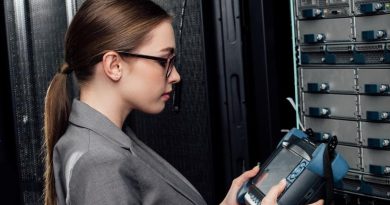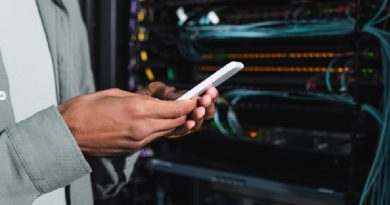How to add favicon in wordpress & html sites
While this article has delved deep into the world of favicon icons, it serves as an invitation—a mere starting point for an exploration that can span design, technology, culture, and user behavior. Each website’s favicon carries a story, and each user interaction with these small symbols weaves a narrative that shapes the digital era.Here we will know how to add favicon
As we journey deeper into the digital age, favicon icons stand as a testament to the power of concise communication and visual symbolism. This final exploration delves into the enduring legacy of favicon icons, their role in shaping the digital landscape, and their timeless significance in the evolving world of web design.
In the grand tapestry of web design, favicon icons emerge as timeless protagonists, weaving a tale of creativity, connection, and continuity. This essay’s odyssey through their significance, potential, and evolving role in the digital landscape underscores the enduring impact of these small yet significant symbols.
As the digital realm continues to evolve, favicon icons remain steadfast, capturing the essence of brands, communicating messages, and forging connections that resonate across screens and generations. By harnessing the power of favicon design, website owners and designers can write their own chapter in this enduring saga—a saga that transcends pixels and browsers to shape the very essence of our digital existence.
- Preserving Digital Identity: Favicon icons encapsulate a website’s identity in a compact symbol, leaving an imprint on users’ memories and forging a connection between the virtual realm and the real world.
- Cultural and Historical Significance: Just as art carries cultural and historical significance, favicon icons can become markers of a specific time, representing design trends, technological advancements, and cultural shifts.
- Digital Ancestry: Favicons become artifacts of digital ancestry, reflecting the evolution of a brand, company, or individual over time. Tracing the progression of favicon designs can offer insights into the journey of digital transformation.
- Human-Computer Interaction: Favicons embody the harmony of human-computer interaction, where the language of design communicates across screens, languages, and devices to create seamless and intuitive experiences.
WordPress Customizer
The simplest and easiest method for adding a favicon in WordPress has been available since WordPress version 4.3. It’s as simple as uploading your favicon, cropping it if necessary, and then finalizing it in a few clicks.
If you choose this method for managing your favicon in WordPress, your favicon should have a minimum size of 512×512 pixels. However, since the icon will be displayed with a size of 16×16 pixels in the browser tab, you should be sure that your logo is still recognizable at this scale. We’ll now explain step-by-step how to set a favicon in WordPress using the Customizer.
Step 1: Open the Customizer
In the WordPress dashboard, click on “Appearance” and then “Customize”.
Open the Customizer in the WordPress dashboard.
Step 2: Open “Site Identity”
The WordPress Customizer will open. Next, click on “Site Identity”.
In the “Site Identity” section, you can edit your website’s title as well as the favicon.
Step 3: Click on “Select site icon”
In this area, you can set the title and tagline of your website. This information is displayed next to the favicon in browser tabs. In the section “Site icon”, click on “Select site icon” in order to set your favicon in WordPress.
Click on “Select site icon” to upload your favicon.
Step 4: Select your favicon
In the next step, the WordPress media library will open. If you’ve already uploaded your favicon to WordPress, you can simply select it. Otherwise, click on “Upload Files” and choose the file from the folders in your computer. Confirm your selection by clicking the “Select” button.
Select your favicon in the WordPress media library or upload it.
Step 5: Crop your favicon
You’ll then have the chance to crop the image you selected. WordPress automatically shows a preview of your favicon in the menu on the right. As soon as you’ve finished cropping, confirm your selection by clicking “Crop Image”. If your image is already correctly sized, simply click on “Skip Cropping”.
You can crop your favicon directly in WordPress.
WordPress will then automatically implement your favicon. If you want to change your favicon again, simply navigate back to the WordPress Customizer as explained above.
Favicon addition using plug-in
WordPress offers a plug-in for almost every feature you might need, so naturally there’s one for favicons as well. One of the most popular, free plug-ins is Favicon by RealFaviconGenerator. This plug-in provides more options for editing than the WordPress Customizer, so you can improve the compatibility of your favicon with various devices and app icons. In what follows, we explain how you can use this plug-in to add a favicon in WordPress.
Step 1: Install the plug-in
To install the plug-in, open the section “Plugins” in the WordPress dashboard and click on “Add New”.
Install a suitable plug-in in order to set a favicon in WordPress.
Search for the plug-in “Favicon by RealFaviconGenerator”, then select the plug-in in the search results, and click “Install Now”. Finally, click on “Activate”. The plug-in is now ready to use.
Favicon by RealFaviconGenerator is a popular plug-in for managing favicons in WordPress.
Step 2: Open the settings for the plug-in
Once the plug-in is installed, click on “Appearance” and then “Favicon”. On this page, you can adjust the settings related to your favicon.
Under “Appearance”, you can adjust the settings related to your favicon.
![]()
Step 3: Selecting your favicon
Click on “Select from the Media Library” in order to open the WordPress media library and select the image you want to use for your favicon. The image is required to have a minimum size of 70×70 pixels; however, a size of 260×260 or larger is recommended. After you’ve selected the image, confirm your selection with the button “Generate favicon”.
Choose the image for your favicon from the WordPress media library.
Step 4: Set your favicon
The plug-in will automatically redirect you to the app’s website. As soon as you’ve uploaded your favicon, you’ll have the chance to edit it. Take advantage of these features if you’d like to adapt the appearance of your favicon for desktop browsers, Google search results, or various smartphones.
The plug-in offers a variety of options for editing your icon.
If you’ve finished making changes or want to skip over the remaining steps, scroll to the bottom of the page and click on the button “Generate your Favicons and HTML Code”.
Confirm your settings with the button at the bottom of the page.
The plug-in will then direct you back to the WordPress backend and confirm the successful setup of your favicon.
The plug-in directs you back to the WordPress dashboard.
Add the favicon manually in WordPress
WordPress also makes it possible to manually implement changes in many cases. You can thus add a favicon to your WordPress site using File Transfer Protocol (FTP). You’ll need a favicon package with various files and HTML code. Both of them can easily be created with an online tool.
Step 1: Create a favicon file
Open an online tool for generating a favicon. In this example, we use the real favicon user. In the app, click on the button “Select your Favicon image” to upload the relevant image.
Upload the image for your favicon on the Real Favicon Generator. Source: https://realfavicongenerator.net
Next, you’ll have the option of editing the properties of your image, such as size and background. When you’re done making your desired changes, click on “Generate your Favicons and HTML code” at the bottom of the page.
The Favicon Generator automatically creates all the files you need. Source:
https://realfavicongenerator.net
In the next step, you can download the favicon package and copy the HTML code. Download the package and name it “favicon.ico”, so that it will be recognized as a favicon.
Download the favicon package and copy the HTML code. Source: https://realfavicongenerator.net
Step 2: Upload the favicon package using FTP
You can now use FTP to access the WordPress data. Open the main directory and upload the favicon package there. Be sure that you’re in the same folder as the WP admin or WP content folder.
Step 3: Insert HTML code
Finally, open the file header.php and insert the HTML code for the favicon in the header area. Make sure that your domain and favicon path are entered correctly.
Add a Site Icon from settings
You can upload a Site Icon by following these steps:
- Starting from your dashboard go to Settings → General.
- Click on Change. Your Media Library will be shown. Note that you may need to click on Site Identity before being able to open the Media Library, depending on your theme.
- Choose an existing image or upload a new one.
- Click Continue. You may then be given an option to crop the image to make sure it’s square. You can also skip the cropping step if you wish.
- Click the Done button when you’re happy with the icon, and your changes will be saved automatically.
Upload in folder
To add a favicon to your website, either save your favicon image to the root directory of your webserver, or create a folder in the root directory called images, and save your favicon image in this folder. A common name for a favicon image is “favicon.ico”.
Change favicon in html file
Though the above process will work for any website even that is html or wordpress or any other language if that developed. Yet to add the favicon in html please use the following procedure to get the instant output. To add a favicon to your site, create a folder in your project directory called images (if you don’t already have one) and save your desired favicon image in this folder.
Next, add the <link> element (highlighted below) to your index.html file right below the <title> element. Your code should now be like this:
...<title> your website title tag </title><link rel="shortcut icon" type="image/jpg" href="Favicon_Image_Location"/>...
Make sure to replace Favicon_Image_Location with the relative file path of your favicon image. Save the index.html file and reload it in your web browser. Your browser tab should now contain a favicon image.
You should now know how to add favicon images to websites using HTML.
As we delve deeper into the intricate world of favicon icons, we uncover a continuum of creativity that transcends time and technology. This exploration delves into the everlasting impact of favicon icons, their ability to connect users to brands, and the unending journey of design evolution that shapes the digital experience.
- A Bridge Across Time: Favicons serve as bridges that connect the past, present, and future of web design. Just as a single brushstroke can capture a moment in art, a favicon encapsulates an era in digital design.
- Global Digital Language: Favicons speak a universal language that traverses cultural and linguistic boundaries. In a world connected by screens, these small icons become ambassadors of brands and messages, resonating with users across continents.
- Design Legacy: The art of favicon design is an everlasting legacy, a testament to the fusion of technology, aesthetics, and human expression. Each favicon, meticulously crafted, contributes to the rich tapestry of the internet’s visual history.
As we peer into the future of web design, favicon icons may evolve beyond their current form, becoming conduits for immersive experiences that engage users in novel ways. Virtual and augmented reality technologies could transform favicons into gateways to interactive dimensions, enriching user journeys and pushing the boundaries of digital engagement.
In the boundless realm of web design, favicon icons emerge as fragments of creativity that defy the confines of space and time. Their impact stretches far beyond their size, leaving impressions etched in the minds of users and weaving a narrative that extends into the infinite canvas of the digital universe.
As we conclude this exploration, we invite you to embrace the uncharted territory that lies ahead. The world of favicon icons is a canvas waiting to be painted, a story waiting to be told, and an experience waiting to be crafted. It’s a journey of discovery, innovation, and connection that invites designers, creators, and visionaries to shape the future of digital expression.





